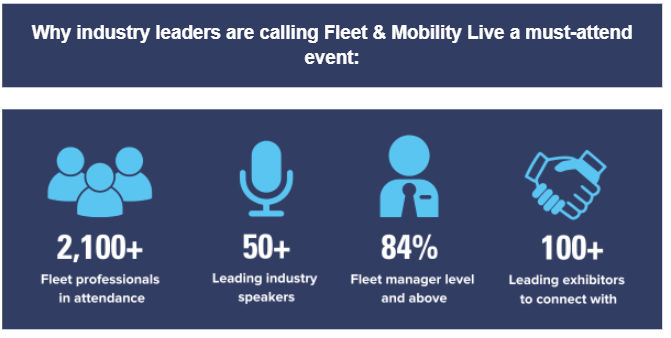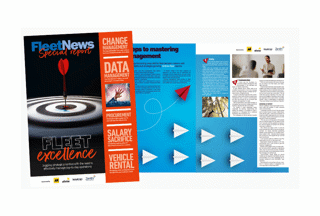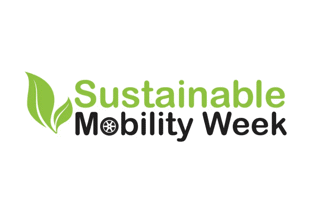Fleet operators need to start considering their electric vehicle policies as soon as possible, even if they do not intend to make a wholesale transition until closer to the 2030 deadline.
Fleet consultant and Hall of Fame member Steve Winter, the former Centrica/British Gas head of fleet (pictured above), related his own experiences when British Gas began its electric journey in 2013.
“We told Fleet News we planned for 10% of our fleet to be EV by 2017,” he told fleet operators at a FleetMaster customer event. “We failed miserably.”
The reason? Lack of knowledge about the complexities of moving a large fleet of cars and vans to a new powertrain. The company was further hindered by the fact that, a decade ago, its only option was the 24kW battery Nissan e-NV200, which offered a range of 45 miles for drivers travelling 50-60 miles a day.
Despite the limitations, British Gas ended up running more than 100 of the vans for three million miles and encountered very few issues.
“That started us thinking that perhaps we could do it; we just needed the right product,” Winter said.
At the time, few lenders would put a residual value on the vans, so Nissan underwrote the RV. When the vans were de-fleeted six-to-seven years later, they all achieved “far more” than the forecast.
“It is important for a business to understand when is the right time for them to get on board,” Winter said. “But to know that, you have to get to know the product and the pitfalls. Testing identifies the issues - payload or range, for example.
“And you have to understand the true cost of ICE versus EV – most TCO (total cost of ownership) models are not detailed enough.”
Winter highlighted four key learnings:
-
Not all manufacturer data is correct. “Test the vehicle in your working environment, for range, weight and payload once you’ve added your racking, beacons, etc.”
-
Get drivers on board or the vehicle will fail. “Driver training is essential to get the most out of the vehicles.”
-
Understand your replacement plan. “Make sure your finance teams are on the same journey because the lease rate will be higher (even if TCO is lower).”
-
Workshops are slow to invest in the technicians and equipment. “There is still limited knowledge and not enough trained staff.”
While British Gas operates a home-based fleet, which necessitates the installation of home chargers complemented by the use of the public network, Network Rail has a depot-based, low mileage fleet. In theory, this makes it an easier operation to transition.
That was the view of James Rooney, who moved from British Gas to Network Rail in February 2023.
The head of road fleet, who has extensive experience in electric vehicles, has already made progress with the car fleet and is now starting the journey with the small-to-medium vans.
“But depot charging is a pain getting the energy in,” Rooney told the FleetMaster delegates. “It requires lots of upgrades at high expense.”
He has identified that 70% of the van fleet could switch to electric today due to their journey profiles; the harder vehicles are the pick-ups and trucks, plus anything that tows.
“Public charging is also a challenge, with lack of space for vans,” Rooney said. “We also have to take into account idling for electric vehicles.”
He is considering other options to speed to the carbon reduction journey, including HVO and hydrogen. “It has to be an alternative fuel transition, not an EV show.”
The continuation of Centrica and British Gas’s transition to electric now falls to fleet engineering and innovation manager Matt Harris.
With 1,800 Vauxhall Vivaro-e vans deployed from a 2022 order of 3,000, the company still has a way to go to achieve its 2025 target of all 9,500 vans switching to electric.
Initially drivers with the capability of having home chargers installed were prioritised, but the policy has expanded to allow those without suitable premises to have vans, as long as they are within two miles of a public charge point. Those relying on the public network are encouraged to charge before the start the working day.
“Involve HR in this discussion in terms of what’s possible within the employee’s terms and conditions,” Harris said. “We can’t make staff have a home charge point even if they can park at home.”
The next development phase will consider how telematics data on remaining charge can be linked into Centrica’s planning and dispatch system to facilitate allocation of jobs based on available range.
FleetMaster’s first major customer event brought together around 20 fleets for a day of learning and practical experiences with the opportunity to drive electric vans and an HGV and practice reversing with a trailer. The company intends to make it an annual occasion.
























Login to comment
Comments
No comments have been made yet.